“May the cars be able to think someday?” This idea seemed impossible, but in today’s world, artificial intelligence has realized it. This technology has not only become part of our daily lives, but is evolving day by day. 2022 ChatGPT chats introduced many people to artificial intelligence, but the technology has a very attractive history that goes back decades ago. In this post, to explore in History of Artificial Intelligence We take a look at how this technology is formed and the important people and events that have been involved in its development.
The starting point of artificial intelligence: the 1950s
In the 1950s, there were computational machines that were essentially used for massive accounts. In the 1950s, a long time before the computational machines became modern -day devices, several factors led to the main roots of artificial intelligence.
Alan Turing; Father of Computer Science and Artificial Intelligence
When computational power was still largely dependent on the human brain. ”Alan Turing“British mathematician imagined a machine building that could go beyond its initial planning. In fact, Turing was thinking of building a machine that could first be coded for planned tasks, but its abilities extended from its original performance.
Turing was unable to prove his theory; Because the computing machines had not improved to the extent, he played a major role in the conceptualization of artificial intelligence by developing a mathematical model called the Turing Machine and the Turing Test, also known as “Imitation Game”. This device measures the ability of a car to deliver smart behaviors such as humans
Dartmouth and John McCarthy Research Project
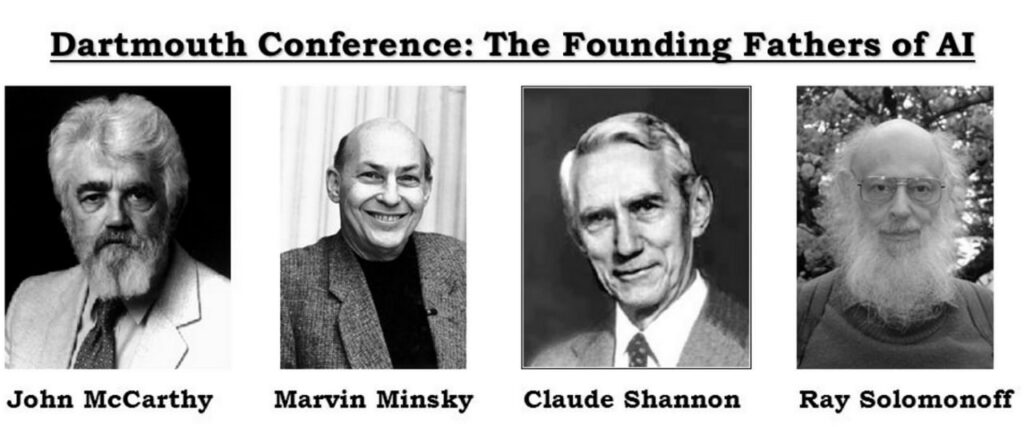
Summer of 1956 (2 years after Turing’s death), “John McCarthy“The American Scientist at Dartmouth College Computer Scientists invited a small group of researchers in various disciplines to participate in a summer project focusing on” intellectual machines “.
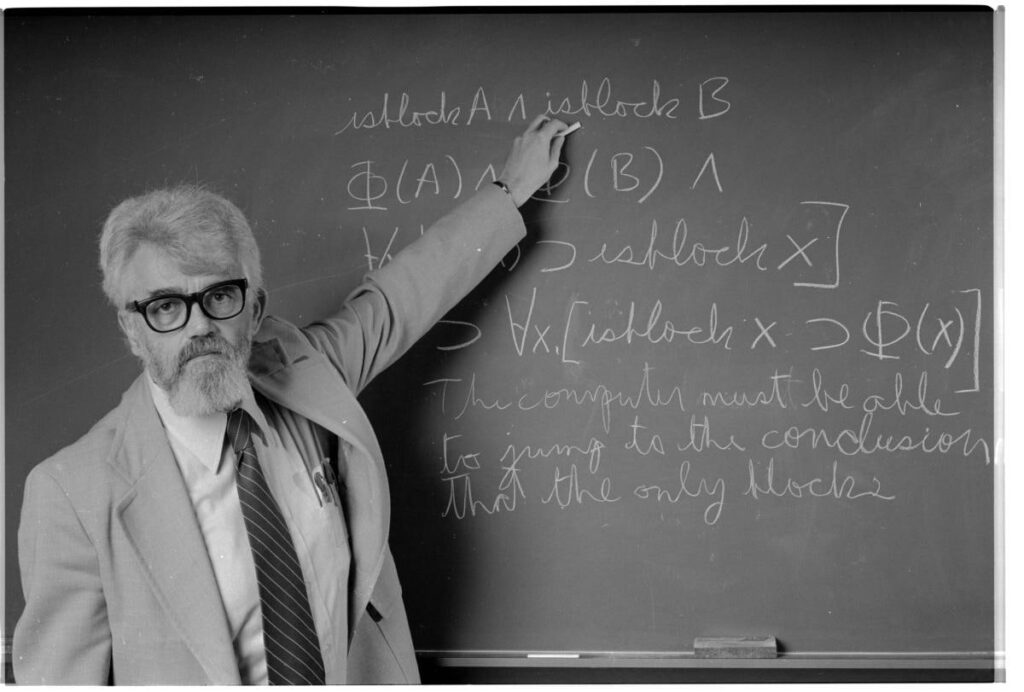
Members of this group believed that “any aspect of learning or any other characteristic of intelligence can be described so accurately that a machine can be made to simulate it.” Given the work that the group did in that summer, many of the Dartmouth research projects are one of the main foundations of artificial intelligence. Also in this research project, McCarthy The first time TermArtificial IntelligenceHas used.
Artificial Intelligence Bed: 60s to 70
The Dartmouth Research Project created a lot of excitement and its initial impact continued until two decades. In the 1960s and 1970s, the early signs of artificial intelligence technology were created in various forms.
Eliza; The first chats in history
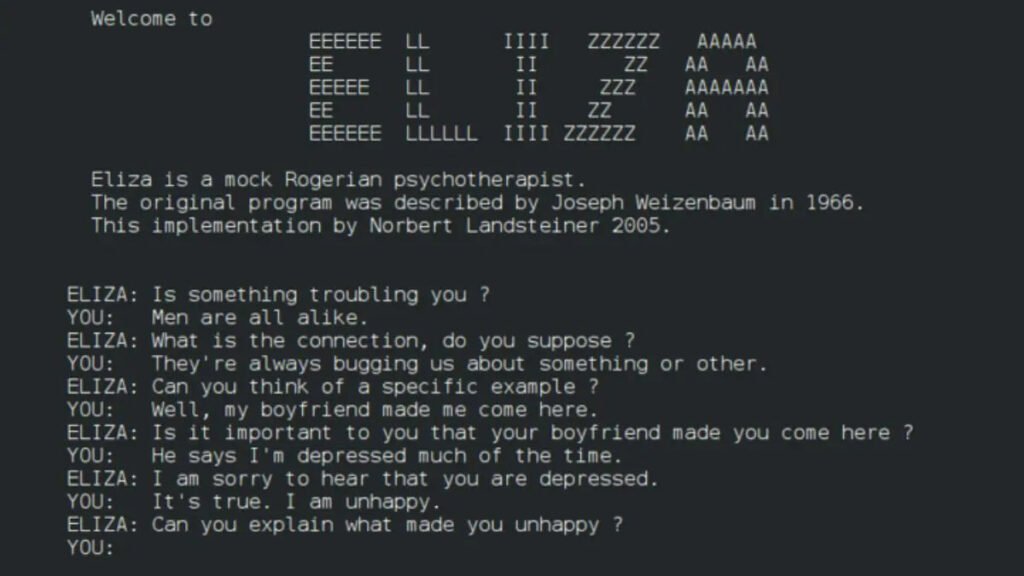
Eliza ThatJoseph WizeniamMIT, a 1966 computer scientist, is widely considered the first chats in history. The purpose of this computer program is to simulate conversation with psychologist and provide therapeutic ways using the answers that users provide.
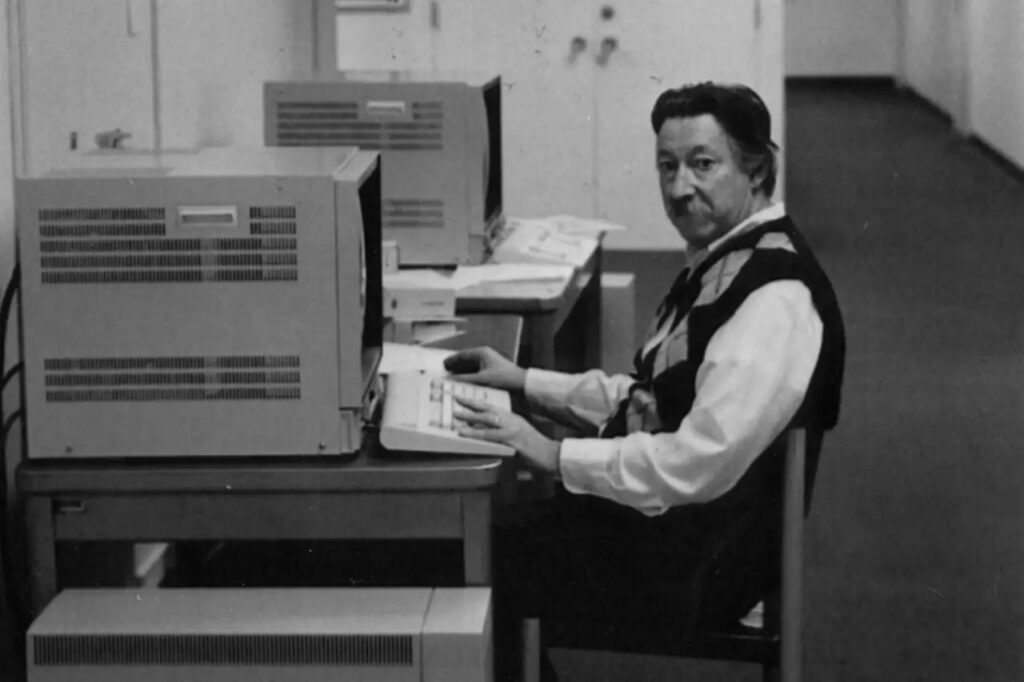
Eliza was one of the first examples of artificial intelligence programs that simulated human interaction naturally. Despite its simplicity, it is of great importance in the history of artificial intelligence and natural language processing and is a model for many subsequent natural language processing systems such as chats and audio assistants such as Siri and Alexa.
Robot shock; The first moving robot
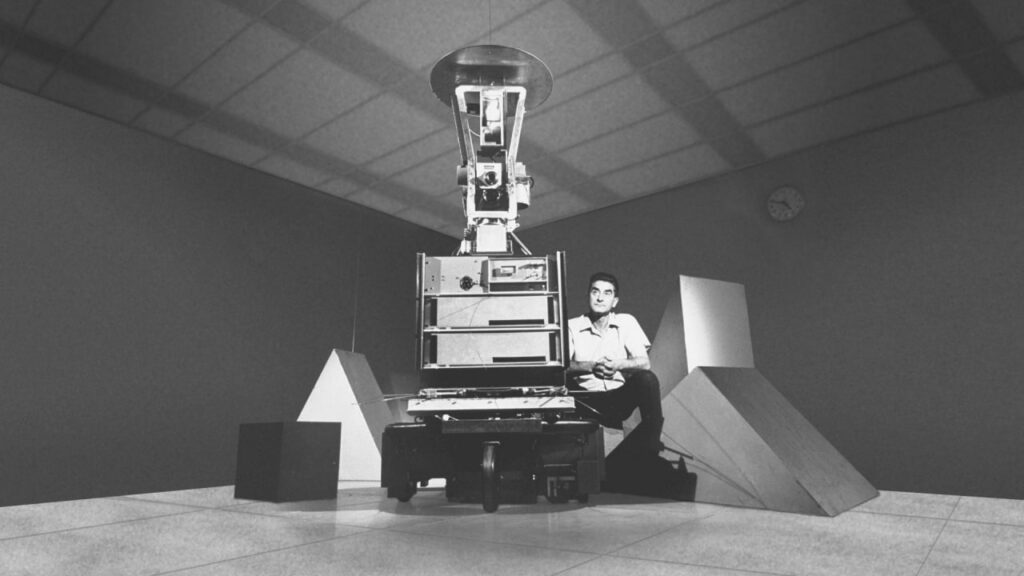
Between 1966 and 1972, researchers at the Stanford Research Institute of Robotics and a camera called Shakey the Robot could move in different environments. According to an article later published by scientists, their purpose is to “develop concepts and techniques for artificial intelligence that allows automatic system to operate in real -life real environments.”
Although Shakey’s capabilities have been very basic compared to today’s advanced robots, the robot has helped artificial intelligence technology in a variety of areas, including “visual analysis, routing and manipulation of objects”.
Establishment of the American Artificial Intelligence Association
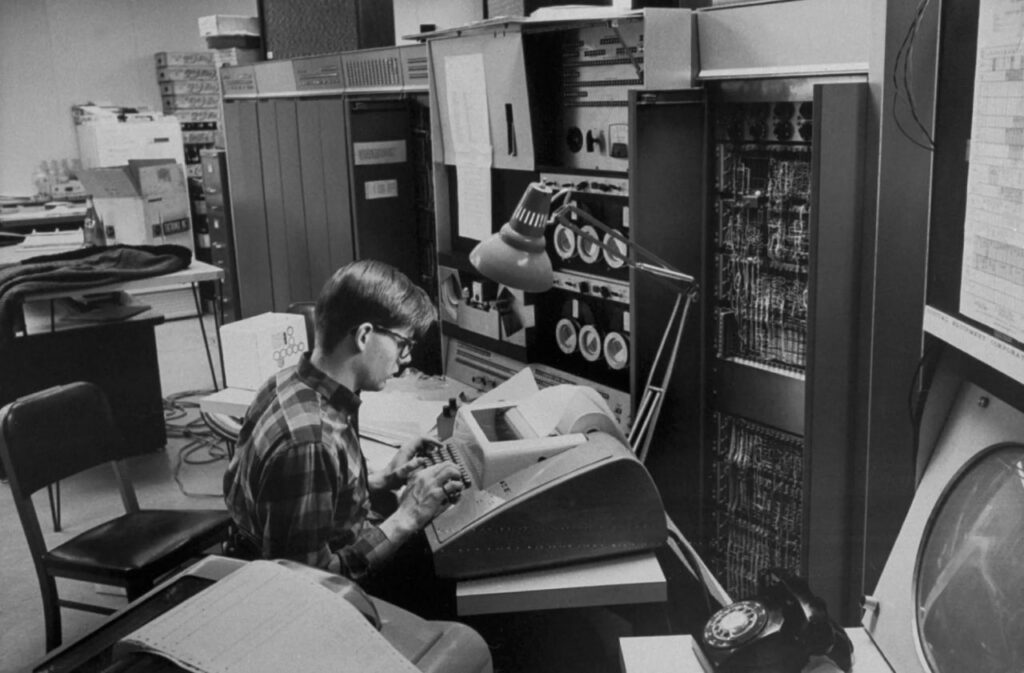
After the Dartmouth conference in the 1950s, artificial intelligence research expanded in institutions such as MIT, Stanford and Carnegie Malun; So people who worked on artificial intelligence research needed new opportunities to share their information and discoveries. In 1977 and 1979, an International Conference on Artificial Intelligence was held, but no more coherent society was formed.
American Artificial Intelligence Association Year 1979 It was formed for this purpose. The organization’s focus has been to create a journal for sharing artificial intelligence data, holding workshops and annual conferences on the technology. The association is currently operating as the “Aaai Society of Artificial Intelligence”.
Winter artificial intelligence

In 1974, British mathematician James Light Helle released a critical report on academic artificial intelligence research, now known as the Light Helle report. He claimed that the researchers had promised over the potential of machine intelligence and that no great work was done. His claim led to a sharp decline in investment in artificial intelligence.
This period is called “Winter Winter Intelligence”, which covers the late 1970s to the early 1990s.
Early emotions of artificial intelligence: 1980s to 1990
The winter of artificial intelligence, which began in the 1970s, continued for two decades. Of course, in the early 1980s, more limited activities were carried out in the development of this technology, which led to more funding for AI research and development in the late 1990s.
The first driver’s car

“Ernest Dikman”, a German scientist, year 1986 Invented the world’s first car. His car was technically Van Mercedes -Benz, equipped with computer systems and sensors to track environment. The vehicle could only move on unpublished roads (other cars and pedestrians).
Diploma
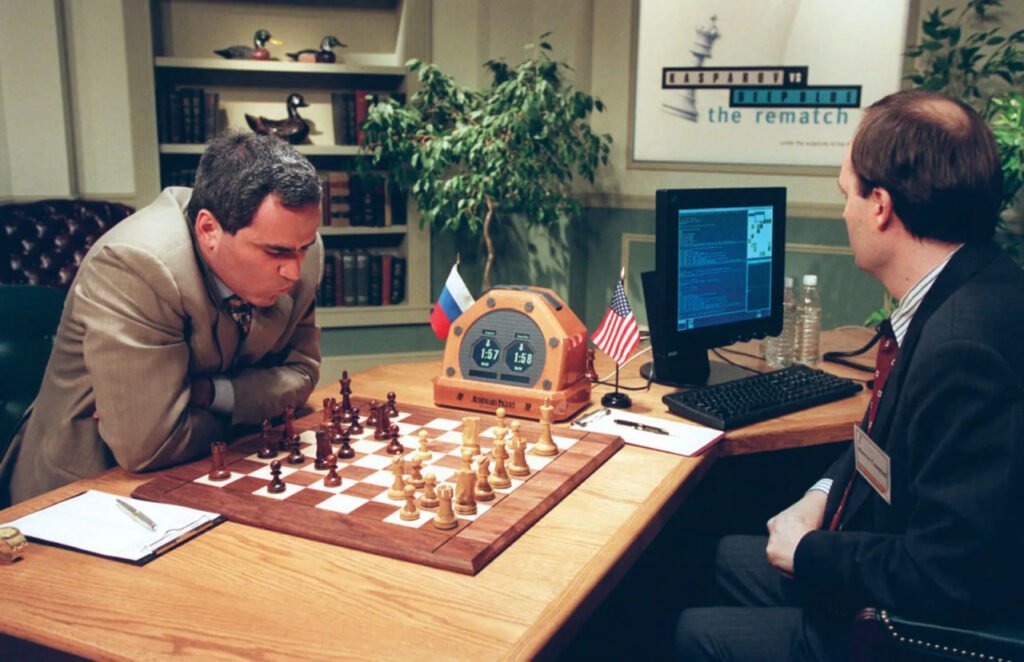
Deep blue or Deep Blue is an IBM -made chess chess. In 1966, IBM tested its computer system in a competition with the world chess champion, Gary Casparov. At that time, Deep Blue won only one of six games, but a year later he was able to win the full win. It is noteworthy that Deep Blue only defeated the world chess champion in 19 movements.
Although the performance of Dip Blue does not reach today’s models of artificial intelligence, it could process information at a faster than humans. For further understanding, the system can examine 200 million possible chess moves in a second.
Artificial Intelligence Growth: 2000 by 2019
The re -attention of artificial intelligence in the 1990s has led to a significant growth since 2000, which we will discuss in the history of artificial intelligence.
Making a kismant robot with the ability to understand human emotions
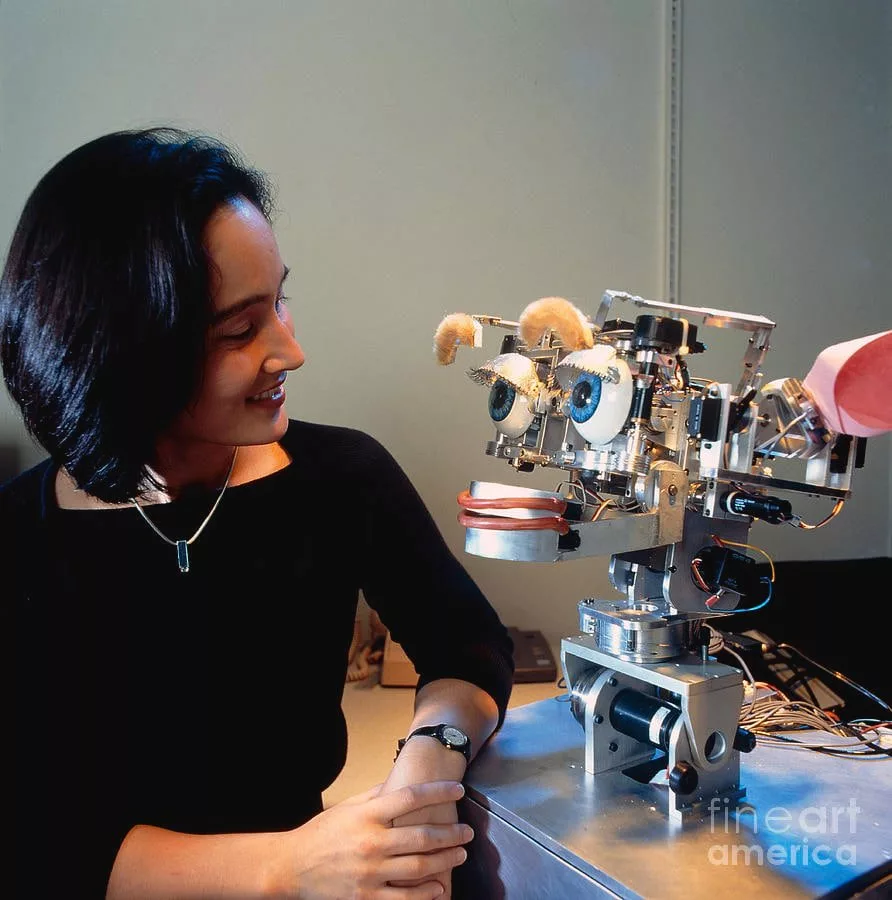
Kismhet is a robot that can identify and simulate human emotions. Although the robot was built in 1997, the project was 2000.
Dr. Sinsa Berizet has built Kismet at the MIT Artificial Intelligence Lab. The robot had a sensor, microphone and programming that could understand the “process of human emotions”. All of this helped the robot imitates a wide range of emotions.
NASA explorers
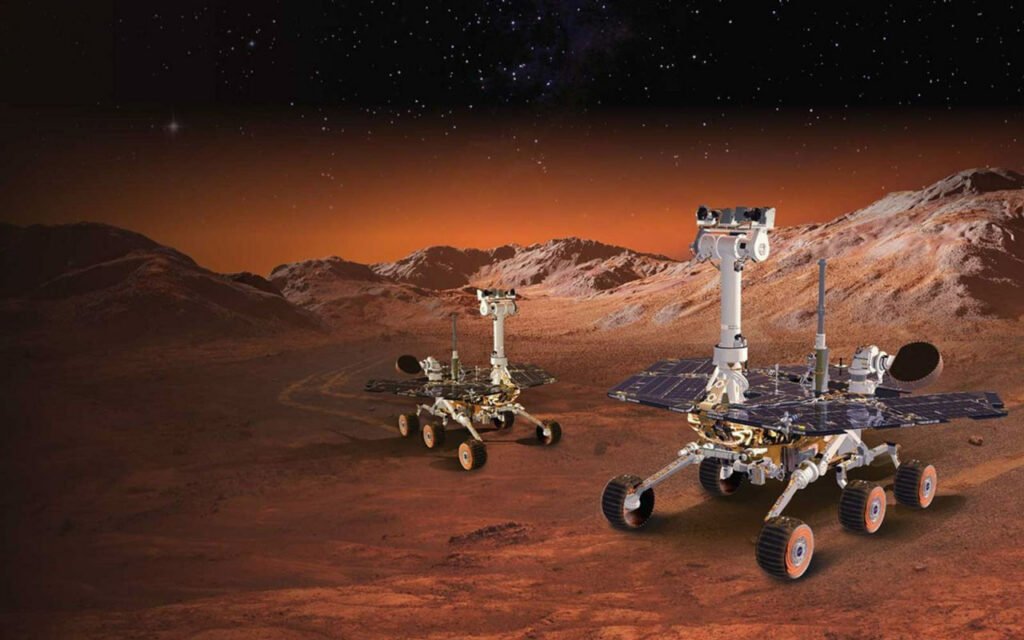
Mars reached the ground in 2004, and NASA used these conditions by sending two rover, Spirit and Opportnet. Both NASA space probes were equipped with artificial intelligence that helped them cross the rocky Mars surface and make independent decisions.
Watson AI to answer questions
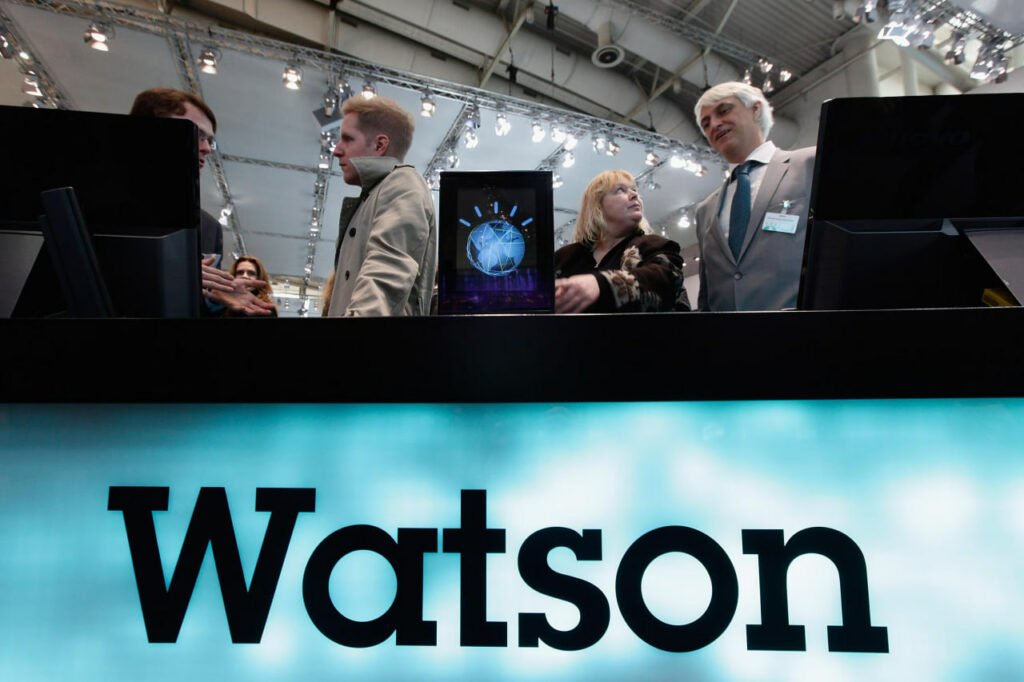
2011, a few years after DeepBelo defeated the world chess champion, IBM another competitive computer system called Watson (WatsonWATSON) Created that could answer different questions. At that time, the system was tested with Jeopardy’s American race questions. Scientists have used encyclopedia data and information across the Internet to teach this Watson.
Watson could have answered their answers by receiving questions in natural language, and with the same simple formula, he was able to defeat the two of the most prominent Jeopardy champions.
Siri and Alexa
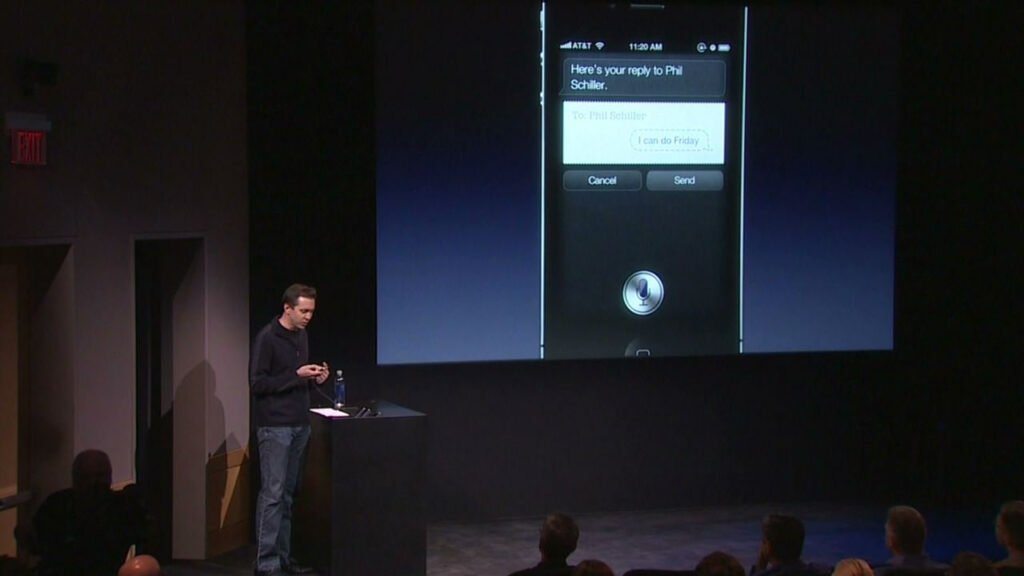
Siri and Alexa are among the most well -known assistants of today’s artificial intelligence. Apple 2011 at its event to introduce the iPhone 4S showed a new and exciting feature: a virtual assistant called Siri. 3 years later, Amazon’s dedicated virtual assistant named his name Alexa Introduced. Both products are well -known examples that can understand and answer users’ questions.
Of course they had some limitations; Siri and Alexa, for example, were planned so that they could only understand the long list of questions and could not respond properly to information outside their field.
Jeffrey Hinton and Neural Networks
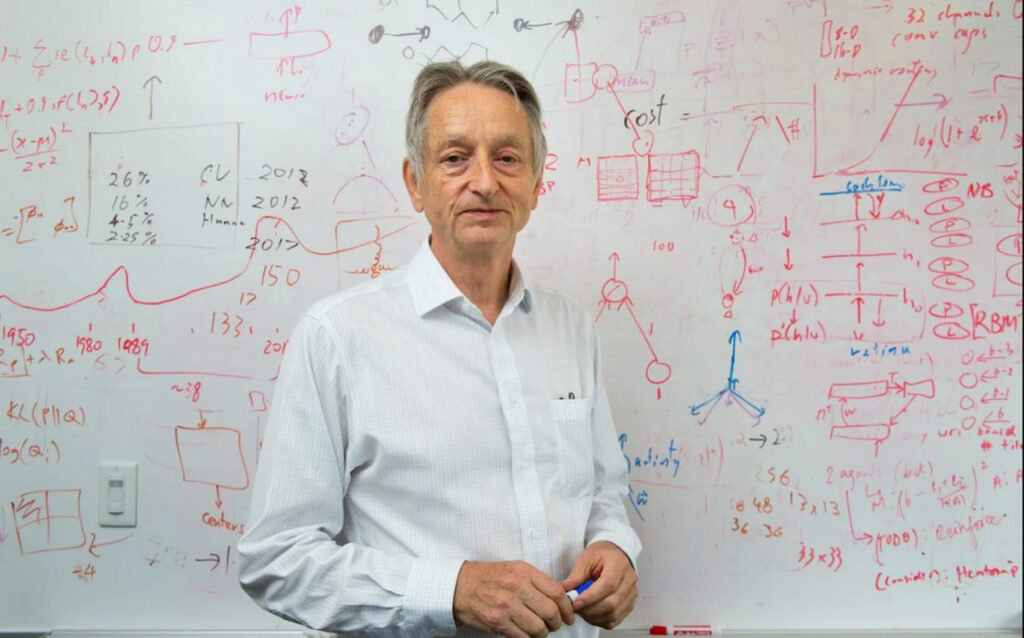
In the 1970s, a scientist named Jeffrey Hinton began exploring the idea of neural networks during my doctoral studies. Neural networks are referred to as artificial intelligence systems that are made to process data in a way similar to the human brain. Until 2012, when two Hinton students showed their research in the Imagnet Competition, the technology industry did not experience neural network development.
Hinton’s job in the field of neural networks and deep learning (the process that the artificial intelligence system teaches a large amount of data and precise prediction) has been very important for artificial intelligence processes such as natural language processing and speech recognition. Hinton joined Google in 2013 and resigned in 2023 to talk more freely about the dangers of artificial intelligence.
Saudi citizen
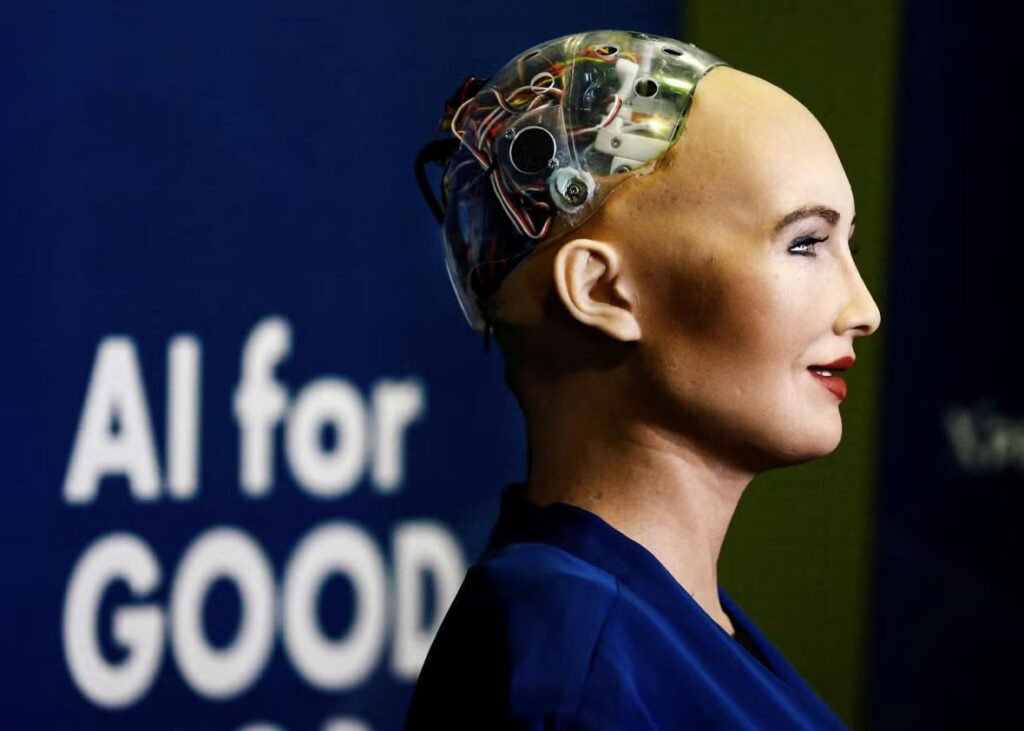
HanSon Robotics based in Hong Kong, in 2016 built an anthropological robot called Sophia that could simulate human face, jokes and conversations and make a big leap in the robotics field. Sophia became a global phenomenon with its artificial intelligence and innovative abilities to communicate with humans and often appeared in television -based conversations.
The situation was complicated when Saudi Arabia awarded Sophia Citizenship in 2017 and turned it into the first artificial intelligence robot to receive this right. Criticism was, of course.
Alphaago
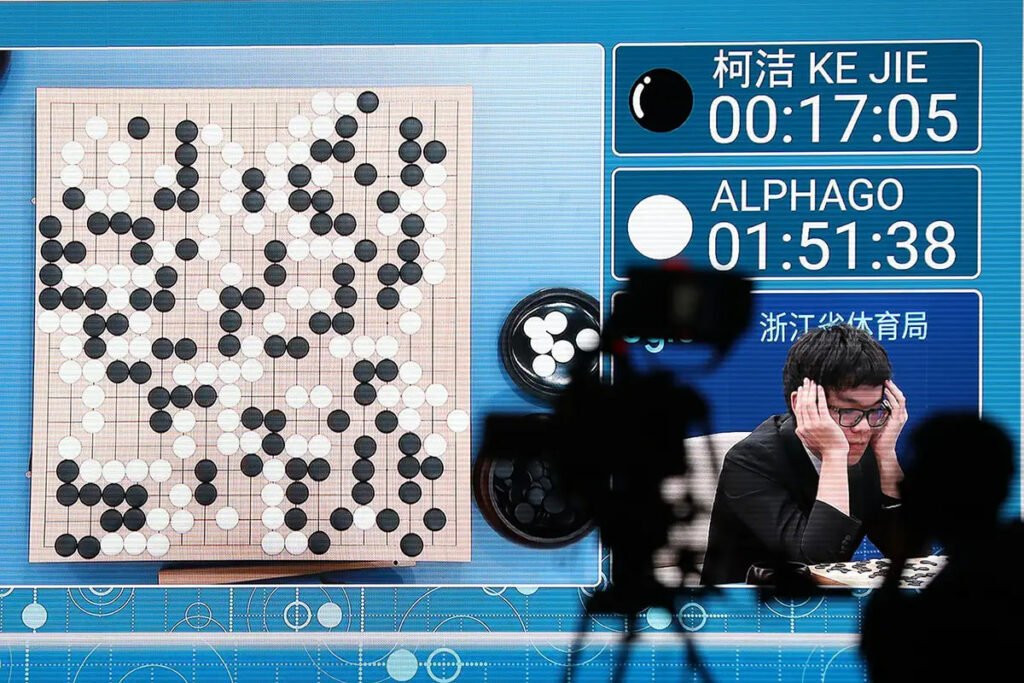
Alphaago It is an artificial intelligence program that Google Dipmind’s research laboratory has been able to defeat Lee Sedul, one of the world’s best players in the GO Desktop Game.
This artificial intelligence program uses neural networks and advanced search algorithms, and has been trained to play GO in a method called “Reinforcement Learning” that enhances its abilities with more games. Alphago proved that artificial intelligence could solve problems that were timeless.
Sudden growth of artificial intelligence: Since 2020
All the things we’ve mentioned so far have made artificial intelligence grow a lot in recent years. Unlike traditional systems designed to answer a set of coded questions, there are many artificial intelligence systems in today’s world that can be used for several different tasks.
OpenAI and Publish Gpt-3 Model
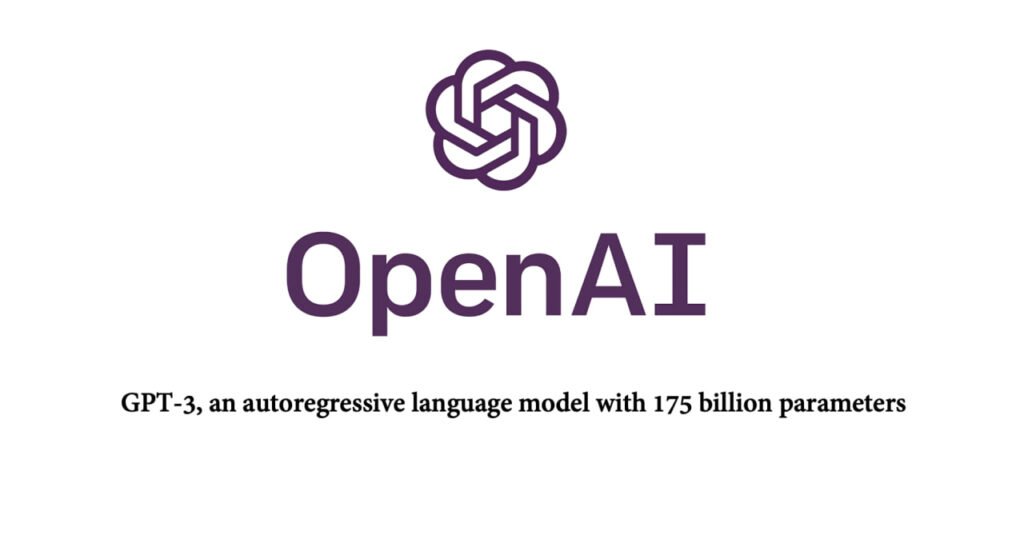
OpenAI Research Company built a trained manufacturer or GPT that was based on the architecture of its early models such as GPT-1 and GPT-2, which were based on billions of inputs. Of course, these models were also capable of creating textual responses.
The GPT-3 Long Language Model, released in 2020, welcomed a great deal of progress in the field of artificial intelligence. The Gpt-3 was taught with 175 billion parameters, which shows the greatness of the Gpt-2, which was taught only one billion and 500 million parameters.
DALL-E’s illustrator artificial intelligence

Dall-E is another artificial intelligence made by Openai and published in 2021 and can turn the text into the image. The program produces high quality and significant images based on the textual commands of users. This model was the founder of its similar models to produce video and video content based on text. The first version of the Dall-E used a version of the Gpt-3 model and was trained on 12 billion parameters.
ChatGpt Publish
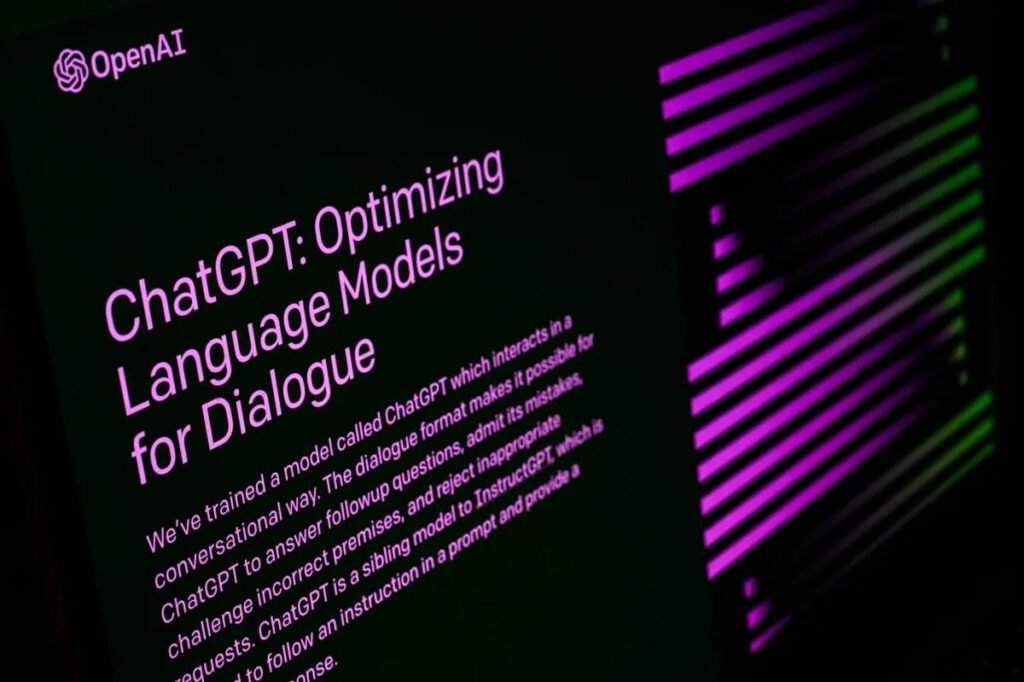
OpenAI 2022 Chats Artificial Intelligence Chatgpt He released that with the support of its large GPT-3 language model in a much more realistic way than all previous chats can interact with users. These chats, which many are currently used, can be used in areas such as coding or writing a resume or conducting a specific topic research. Unlike previous chats, ChatGPT can also ask you and identify inappropriate requests.
The growth of productive artificial intelligence
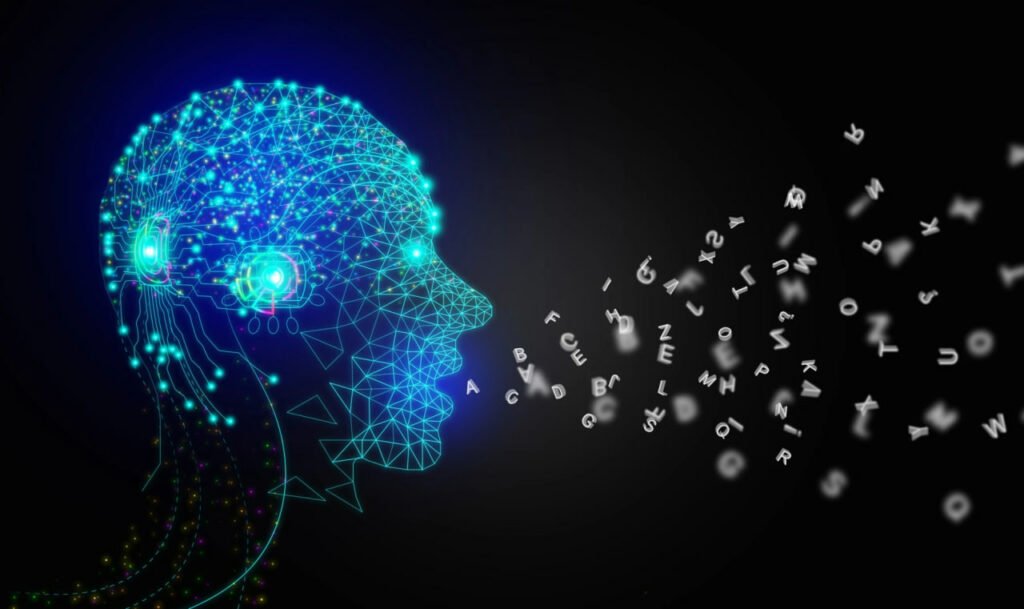
2023 was very important in terms of development and publication of productive artificial intelligence models. Not only released the Gpt-4 model, but Microsoft added ChatGpt to its Bing search engine, and Google also released its chattots called Bard (now called Jina).
Growth in the field of artificial intelligence and the release of the Deepseek model by China
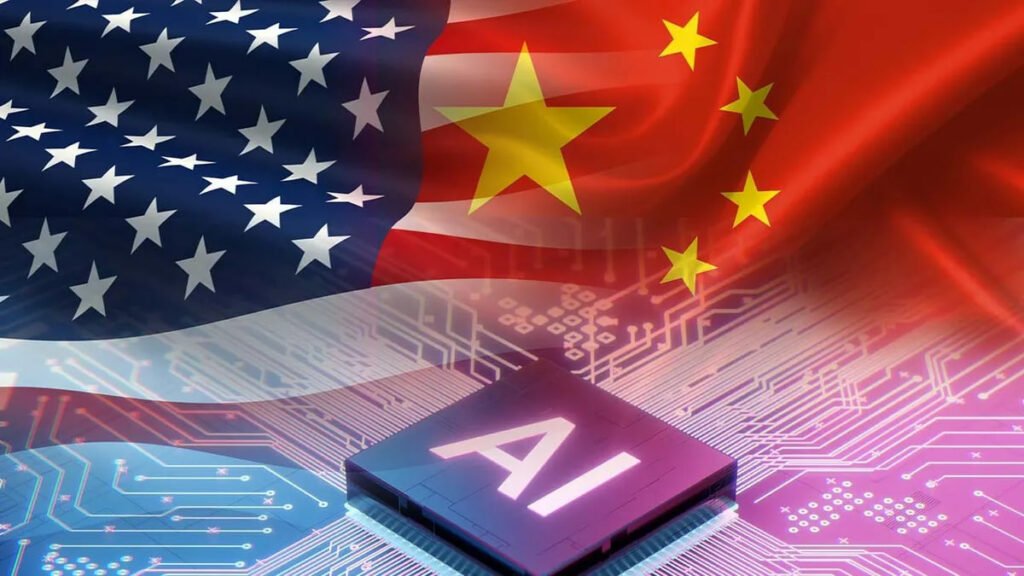
The capabilities of US companies have also led Chinese companies to operate and have released several important models so far. Probably the first important artificial intelligence that Chinese companies released is Deepseek. Released in early 2025, this model uses much less resources than OpenAI -made models, and the cost of building and training is significantly lower, but the Chinese claim their model performance in some areas, such as ChatGPT coding and models. Another pioneer equals or is better.
Where exactly did artificial intelligence start?
In short, the artificial intelligence of the 1950s and 1960s was known as a scientific discipline, and British mathematician Alan Turing was initially founded. The word “artificial intelligence” was officially introduced in 1956 during the Dartmouth Conference. At the time of writing this, artificial intelligence has improved greatly than in the past, and the general public is more familiar with it. In this post we have told you the history of artificial intelligence.
Frequently asked questions
Artificial intelligence work officially began in the 1950s. One of the most important moments in the history of AI was the 1956 Dartmouth Conference in which John McCarthy first introduced the term “artificial intelligence”.
The first success in this area included programs that could play games like chess or systems that were able to solve mathematical and logical problems.
Artificial intelligence refers to computer systems and programs that can perform tasks that usually require human intelligence, such as learning, decision making, and simulating human behaviors.
RCO NEWS

















